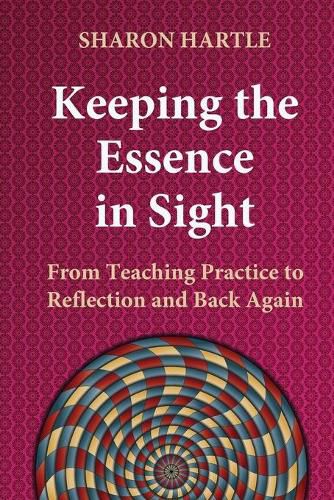Readings Newsletter
Become a Readings Member to make your shopping experience even easier.
Sign in or sign up for free!
You’re not far away from qualifying for FREE standard shipping within Australia
You’ve qualified for FREE standard shipping within Australia
The cart is loading…






This title is printed to order. This book may have been self-published. If so, we cannot guarantee the quality of the content. In the main most books will have gone through the editing process however some may not. We therefore suggest that you be aware of this before ordering this book. If in doubt check either the author or publisher’s details as we are unable to accept any returns unless they are faulty. Please contact us if you have any questions.
I think the discussion questions at the end of each section are a useful way to encourage readers to extrapolate from Sharon’s ideas to their own contexts. Sandy Millin, author of ELT Playbook and Director of Studies, IH Bydgoszcz
A very welcome and timely contribution to the growing literature on Reflective Practice in TESOL –Dr. Jim Askham, Lecturer Applied Linguistics, University of Leicester
Sharon’s writing is down to earth and her sense of humour shines through on every page, making the book an entertaining read for any English language teacher. –Anne Parry, English Language Consultant, Penguin Elementary Writing Skills
Keeping the Essence in Sight is an invitation to become a better teacher. To remember the essence of teaching, why we go into the classroom in the first place: To teach our students to communicate in the English language. We don’t become teachers so that we can grade tests, or fulfill national educational plans, or deal with difficult students, although teachers do all those things and more. We become teachers because we love teaching and we love our students.
The book is based on Sharon Hartle’s renowned blog comprised of reflections on her teaching experience, and organized into four sections: Learning, Teaching, Testing, and Professional Development. Within each section she addresses key questions in ELT, such as:
How can we motivate learners to want to learn and develop learner autonomy? What are the best ways to integrate technology into my lessons? Should we think about blended teaching instead of blended learning? Can we improve our teaching and our assessment if we change our model of English? What are some easy and accessible ways to do professional development? And most importantly, how can we be better teachers.
$9.00 standard shipping within Australia
FREE standard shipping within Australia for orders over $100.00
Express & International shipping calculated at checkout
This title is printed to order. This book may have been self-published. If so, we cannot guarantee the quality of the content. In the main most books will have gone through the editing process however some may not. We therefore suggest that you be aware of this before ordering this book. If in doubt check either the author or publisher’s details as we are unable to accept any returns unless they are faulty. Please contact us if you have any questions.
I think the discussion questions at the end of each section are a useful way to encourage readers to extrapolate from Sharon’s ideas to their own contexts. Sandy Millin, author of ELT Playbook and Director of Studies, IH Bydgoszcz
A very welcome and timely contribution to the growing literature on Reflective Practice in TESOL –Dr. Jim Askham, Lecturer Applied Linguistics, University of Leicester
Sharon’s writing is down to earth and her sense of humour shines through on every page, making the book an entertaining read for any English language teacher. –Anne Parry, English Language Consultant, Penguin Elementary Writing Skills
Keeping the Essence in Sight is an invitation to become a better teacher. To remember the essence of teaching, why we go into the classroom in the first place: To teach our students to communicate in the English language. We don’t become teachers so that we can grade tests, or fulfill national educational plans, or deal with difficult students, although teachers do all those things and more. We become teachers because we love teaching and we love our students.
The book is based on Sharon Hartle’s renowned blog comprised of reflections on her teaching experience, and organized into four sections: Learning, Teaching, Testing, and Professional Development. Within each section she addresses key questions in ELT, such as:
How can we motivate learners to want to learn and develop learner autonomy? What are the best ways to integrate technology into my lessons? Should we think about blended teaching instead of blended learning? Can we improve our teaching and our assessment if we change our model of English? What are some easy and accessible ways to do professional development? And most importantly, how can we be better teachers.